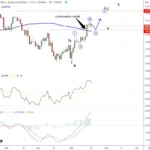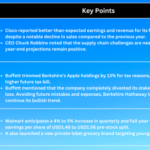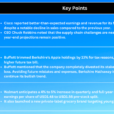
 Painting is by my father, Naum Katsenelson.
Painting is by my father, Naum Katsenelson.
Something weird happened to me on Twitter a few months ago. A “follower” started lashing out at me about a stock we own. When people attack me for my views it doesn’t bother me (I wrote several chapters in Soul in the Game on this topic). I don’t let personal attacks get to me, unless people start attaching bricks to their 280 characters.
This person’s lambasting of me was different. He was upset about the decline of a stock I had never publicly discussed in any of my newsletters or talks. This person was not a client. I didn’t know who he was; I had never met him. I was really confused why a stock my clients and I personally owned was so important to him. It’s like someone being upset about the color my wife chose to paint our kitchen.
Once gently confronted, he apologized, said he was a big fan, and explained that he had read my 13F (a form we have to file with the SEC 45 days after the quarter end, where we have to report our holdings in US stocks). He saw that the stock was one of our top holdings, and he bought it. Because I owned it, he made it a disproportionately large position.
I was truly upset about this incident. One of my principles in life is to have a net positive impact on the people I touch. If every single stock I discussed only went straight up, I wouldn’t have to worry about it. But this is not how life works.
Let me give you an example.
Next week I’m going to share an example of Uber’s hedging strategy. We bought Uber a few months before the pandemic. (I wrote about it here). Uber’s stock went up 30% right after we bought it and then declined around 80% within months (the shutdown economy was not good for the ride-sharing business). As the economy started to reopen, the stock went up a lot (we almost doubled our money on the original purchase). Then it more than halved. Two years later, it has tripled from that point.
As the American philosopher Mike Tyson says, “Everyone has a plan until they get punched in the mouth.” True investing starts at the point of your getting punched in the mouth, which will happen with almost every stock you’ll own.
Bad things can happen to good companies. That’s life.
Our Uber ownership is a great example of that. This one has worked out (so far). This is not always the case. In a few weeks, I’ll discuss Charter Communications and Comcast. These are still developing stories.
This is why doing your own research is so important. We added to our Uber positions several times during the pandemic and again two years ago. We put on a hedge, similar to the one I’ll discuss next week, at the end of the pandemic.
It’s what you do when you get punched in the mouth that matters. But just like in the boxing ring, what you do when the glove lands on your jaw is completely dependent on your preparation, the reps you put in. In investing, it depends on the research you did before you bought the stock and continued to do after you bought it.
In our case, it’s literally spending dozens, sometimes hundreds, of hours between me and my team members researching the company: reading its filings, listening to conference calls, talking to management, consulting our investor network and industry experts, and building financial models.
This is why blindly copying what I or anyone else does in your portfolio is not good for your wealth and your blood pressure. Just like you cannot prepare for a fight in the boxing ring by sending your spouse to train, you cannot prepare for the blows you’ll encounter in stock ownership by relying on my (or someone else’s) research.
Also, as much as I don’t enjoy admitting it – I will be wrong.
You want examples? I have plenty. The most public one is Apple. We bought Apple in 2012, and I wrote a lot about it. It was an extremely hated stock then. We owned it for years and made good money on it.
That is not the mistake part.
I thought we saw peak iPhone in 2019. For the company’s earnings to grow, Apple needed to come out with new categories of products, and it had failed to do that. I was right and wrong. Apple failed miserably in coming out with an Apple car because Tim Cook is not Steve Jobs (he changed the strategy four times!). But Apple has done a great job of growing its services – a highly profitable business.
Most importantly, Apple has done something I had never seen a consumer electronics company do – raise prices. This is why Buffett got the framing of Apple’s business right, and I got it wrong. Buffett saw it as a brand with pricing power. I saw it as both a hardware and software company where the software (ecosystem) component gave Apple recurrence of revenues, which is what gave me confidence to buy the stock in 2012. But my mental model was incomplete. I saw a moat and recurrence of revenues value in Apple eight years before Buffett jumped in. But I was wrong about selling in 2019. This is what investing is- you can be both right and wrong about the same stock.
Also, I did not see Apple trading at the astronomical valuation it is trading at today. I don’t put this into the “I got it wrong” category, because I never make these types of bets.
I remember David Dreman, a superstar value investor, being asked for his favorite stock. He said something along the lines that he didn’t like giving individual stock recommendations because he never knew which one of the stocks in his portfolio would work out. I can relate to that so much. This is why we have a portfolio of stocks and, as importantly, this is why our position-sizing decisions are outsourced to a quantitative matrix. This matrix overrides my emotions.
When I share stock write-ups, they should not be looked at as stock recommendations.
First of all, they are not recommendations.
Second, these are my thoughts at just that point in time. You are on your own as to what you do when you get punched in the mouth. My day job is managing money, not answering emails about stocks. I read all the emails I receive. I appreciate you sending them; please don’t stop. But I increasingly have less time to answer every one of them.
Here is what I suggest you do.
Before you go any further in running with my thoughts on stocks, ask yourself, why am I doing this? Are you looking for shortcuts? Do you want to get rich quick?
Stop.
Take the bulk of your money and hire a money manager or buy a fund. Then take a little bit of your money (as much as you can afford to lose), and gamble with it in the stock market. Yes, gamble, because that is what you are doing. It’s more entertaining than going to Vegas – I get it. But if you are buying a stock completely relying on someone else’s research, that’s a bad form of gambling. (At least most people don’t take their 401(k) to the Mirage and put it on black.)
If you have passion for investing, that’s awesome. Take it seriously. Approach it as a process. Then my or someone else’s 13f can be a treasure trove of information. By the way, every quarter my team and I look at 13fs of other investors I respect. I also constantly read letters written by other investors. But – and this is a key point – if an idea tickles our interest, we’ll do our own research to the point that it will become our idea.
There is no shortcut to greatness. Please do your own research, or spend your time doing what you love, and let others who love investing and have the time manage your portfolio.More By This Author:Why The Survival And Dominance Of Car Manufacturers Is Far From Certain Putting A Charge Back Into The EV Market Tax Loss Harvesting















